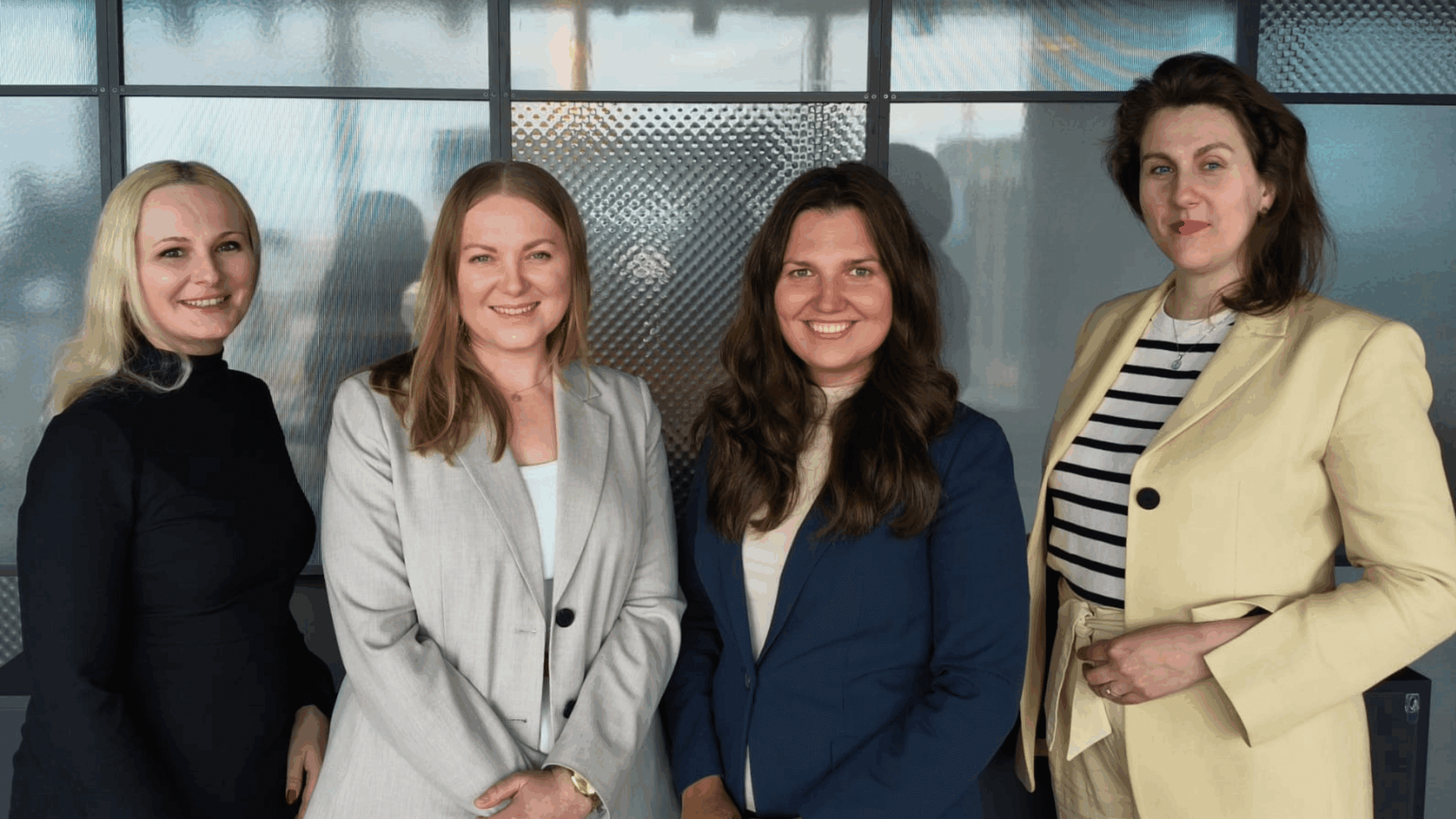A New Perspective on Sick Building Syndrome
The quality of the air we breathe, both outdoors and indoors, has a direct impact on our health, well-being, and overall comfort. As a society, we are widely informed about the effects of major outdoor air pollutants on our health and about the actions we can take to protect ourselves during periods of high pollution levels.
Air Quality in Cities vs. in Rural Areas
Thanks to extensive district heating networks and air quality monitoring systems, which inform residents through, among others, public transportation systems, the air quality in cities can sometimes be better than in rural areas during critical periods of the year. In winter, the burning of solid fuels not only releases a distinct smoky odor but also a variety of hazardous substances into the outdoor air.
Groundbreaking court ruling in Poland
Municipal offices have dedicated teams responsible for monitoring air quality in line with the regulations implementing the EU Air Quality Directive for a cleaner Europe (2024). The issue of poor air quality has also become the subject of legal disputes. A groundbreaking ruling by the District Court in Gliwice in December 2021, upheld by the Supreme Court, found the Polish State Treasury liable for neglecting outdoor air quality protection. A resident of Rybnik was awarded PLN 30,000 in damages for the violation of personal rights. The court noted that during the autumn-winter period, the plaintiff could not ventilate his home, relied on an air purifier running constantly (incurring costs), and was unable to go on family walks or engage in sports activities. This was the first ruling in Poland confirming state responsibility for poor air quality standards.
Indoor air quality problem
However, we seem to be less aware that within our enclosed indoor spaces – homes and offices – we are exposed to a wide range of pollutants that can lead to various health issues affecting the respiratory, cardiovascular, and reproductive systems. These issues are often referred to collectively as Sick Building Syndrome, and yet we spend the majority of our time indoors.
To fill this knowledge gap and raise awareness about indoor air pollution sources and best practices for improving indoor air quality, from design and material selection to construction and usage, we authored the report “Indoor Air Quality in Buildings: Standards, Risks, and Challenges for the Polish Real Estate Market.” In it, we have collected and structured the most important information regarding the impact of indoor air quality on health and well-being and presented the current legal regulations related to building materials allowed on the Polish market that shape the indoor environment of offices, homes, and schools.
Sources of indoor air pollution
The air we breathe indoors contains both pollutants from the outdoor air entering the building and those emitted from within, originating from building and finishing materials, furnishings, microorganisms (often linked to excessive humidity), as well as pollutants from building occupants, pets, or indoor plants.
Impact of urban planning on air quality
Outdoor air pollutants can travel long distances, meaning that local air quality does not always reflect emissions generated in that particular area. It’s not individual property boundaries but urban cells – spatial and functional environmental units – that shape the basic environmental conditions of a development. Urban planning decisions are critical to air quality: the development of low-emission public transport, walking and cycling infrastructure, bans on tobacco use near buildings, preservation of greenery and permeable surfaces, locating buildings away from emission sources, and introducing ventilation corridors and green roofs all contribute to improving the microclimate. A well-designed urban structure can not only limit pollutant inflow but also promote their dispersion and natural filtration.
In this context, combustion, road transport, and industrial activity are especially important factors affecting air quality.
Most dangerous air pollutants
Among the most serious health threats are fine particulate matter (PM10 and PM2.5), which can enter the bloodstream, increasing the risk of cardiovascular and respiratory diseases, cancer, and neurological or reproductive disorders. Other critical substances include nitrogen dioxide and other nitrogen oxides, ground-level ozone, sulfur dioxide, carbon monoxide, benzo(a)pyrene, benzene, arsenic, and heavy metals such as cadmium, nickel, and lead. The new mandatory limit values for these pollutants have been introduced by the aforementioned Directive (EU) 2024/288 on air quality and cleaner air for Europe.
Renewable energy sources and air quality
Renewable energy sources (RES) are frequently discussed in public debates in terms of reducing greenhouse gas emissions and slowing climate change. However, we less often hear the argument that zero- or low-emission energy and heating sources also help reduce outdoor – and consequently indoor – air pollution. Burning solid fuels significantly deteriorates indoor air quality, as particulate matter and toxic gases easily penetrate indoors through necessary mechanical or natural ventilation systems.
Tragic example from history
One stark and tragic example of the consequences of solid fuel combustion was the Great Smog of London from December 5–9, 1952. Due to cold, windless weather and thermal inversion, smoke from domestic and industrial coal-burning fires settled over the city, forming a dense yellow-black smog that reduced visibility to just a few meters and caused a dramatic rise in illnesses and the deaths of thousands.
Available heat sources in Poland
District heating network
In large urban areas, residents often have the option of connecting to a district heating network. Where available, local zoning plans often mandate it as the primary heat source. District heating is highly efficient, offering uninterrupted hot water and heating year-round. However, it is not yet the most eco-friendly solution, as the fuel still mainly comes from combustion, although this depends on local conditions. Locating energy production points outside the city significantly improves local air quality, especially in consumption-only zones. In 2024, coal’s share in Poland, although at a historic low, still exceeded 55%.
Gas as a heat source
Gas remains an important heat source in Poland. In recent years, many municipalities have successfully implemented subsidy programs for replacing coal stoves with gas boilers, improving outdoor air quality in winter in towns with many single-family homes. However, gas, like coal, is a non-renewable resource, and current geopolitical conditions may pose risks to meeting full winter demand.
Heat pumps
A more sustainable source of heating energy is the heat pump. According to Oxford University and the Regulatory Assistance Project, heat pumps are more than twice as efficient as oil or gas systems, even in extreme cold down to −20°C to −30°C. Still, they draw electricity from the grid, meaning their environmental impact depends on a country’s energy mix. Experts recommend combining heat pumps with photovoltaic installations (PV) to offset at least part of the energy demand. For existing buildings, implementing such solutions may pose technical challenges that influence the choice between more efficient ground-source or less efficient air-source pumps.
The use of renewable energy allows for a reduction in harmful emissions into the atmosphere, translating into cleaner outdoor air and healthier indoor environments. As the energy transition advances and renewable technologies become more affordable and efficient, their role in improving air quality will continue to grow.
How to improve indoor air quality?
Since the air entering our buildings mainly comes from outside – through ventilation systems, building envelope leakages, and natural airing – let’s briefly consider what happens inside. We previously mentioned indoor emissions from building materials, but indoor air pollution also arises from human activity: heating and cooking processes, tobacco smoke, and household chemicals.
Technical solutions
What can we do to improve indoor air quality influenced by the external environment?
- Use high-efficiency air filtration systems, such as HEPA and activated carbon filters, to effectively remove particulate matter and chemical pollutants.
- Maintain positive air pressure in occupied spaces to limit the infiltration of polluted air through building envelope leaks.
- Continuously monitor indoor air quality parameters to dynamically adjust ventilation systems in response to changing environmental conditions.
Such practices, aligned with futureproofing design strategies, allow buildings to adapt to evolving environmental and regulatory requirements.
Environmental certificates and ventilation systems
Multicriteria environmental certification systems such as BREEAM, LEED, WELL, DGNB, or Zielony Dom (Green House) also provide a wide range of best practices for monitoring, reducing, and managing indoor air quality. During HVAC system design, planners can specify increased fresh air flow beyond the minimum standards. Alternatively, or additionally, Demand-Controlled Ventilation (DCV) systems can be used. These dynamically regulate airflow based on real-time measurements of CO₂ levels, Total Volatile Organic Compounds (TVOCs), and relative humidity, optimizing both user comfort and HVAC energy efficiency.
Ensuring consistently high supply air quality regardless of outdoor conditions also requires regular filter inspection and replacement. Air disinfection technologies, such as UVGI lamps in air handling units to eliminate microorganisms, are highly effective, though more commonly used in premium buildings.
One simple and effective solution is zoning entry areas: air curtains and vestibules (buffer zones) act as barriers limiting the infiltration of pollutants during building use.
Good practices during investment implementation
During construction, it’s important to:
- Protect HVAC systems by covering ducts and devices to prevent dust accumulation during works.
- Store materials, especially those sensitive to dust and moisture, in sealed packaging.
- Thoroughly ventilate spaces after construction to remove building contaminants and excess moisture.
It’s also crucial to avoid materials with high VOC emissions and ensure safe disposal of hazardous substances such as asbestos, lead, or mercury, which can continually degrade indoor air quality in older buildings.
Ultimately, indoor air quality is closely tied to outdoor air quality, but the final health outcome for building users is shaped not only by design, technology, and urban planning but also by how buildings are used. It’s worth doing this consciously to create healthy, supportive environments for ourselves and our loved ones.

We invite you to read our full report, available for download at the provided link: https://www.cushmanwakefield.com/pl-pl/poland/insights/indoor-air-quality-in-buildings

JULIA FALTUS-JAMES
Currently holds the position of ESG Services Manager at Cushman & Wakefield, specializing in strategic and ESG consulting. She has over 12 years of experience in the construction industry, having worked at companies such as Skanska UK Plc and JWA. She is an accredited specialist in WELL, ActiveScore, and Zielony Dom certification systems. Julia has led WELL CORE and WELL building certifications at both Gold and Platinum levels and specializes in implementing the EU Taxonomy guidelines. She was a speaker at the GBCI Europe Circle 2024 conference, where she presented strategies for preventing air pollution in buildings under the LEED certification system and the EU Taxonomy. She holds degrees in Civil Engineering from the Cracow University of Technology and French Philology from the Jagiellonian University.

KATARZYNA KRZEŚNIAK
A sustainability expert across the entire building process on the investor's side, with 12 years of experience. She currently works as an ESG Project Manager at Peakside Capital Advisors Sp. z o.o. Trained as an architect, she has been an accredited LEED AP BD+C expert since 2014, contributing to the certification of over 400,000 m² of warehouse and office space across Europe. She has personally overseen the selection and proper implementation of finishing materials in office and warehouse spaces in multiple European locations. Katarzyna actively participates in working groups and webinars on sustainable construction and is a member of the Polish Green Building Council (PLGBC).

dr inż. ARCH. MARTA PROMIŃSKA
Director of Sustainability at Strabag Sp. z o.o., and Environmental and Climate Protection Delegate of the Main Board of SARP (Association of Polish Architects). An architect and urban planner, she is an accredited LEED O+M expert and a graduate of the Cracow University of Technology. In 2020, she earned a doctorate from the Silesian University of Technology. Marta is the author of numerous academic publications, including the books "Healthy Urbanism: A New Standard in Spatial Planning" and "Healthy Architecture: A New Standard in Sustainable Design." She served as a WELL City Advisory Technical Consultant for the 2022–2024 term and is also a member of the Polish Green Building Council.

MAŁGORZATA SZAŁEK
A graduate of Civil Engineering from both the Wrocław University of Science and Technology and TU Dresden, with hands-on design and construction experience in both Poland and Germany. A passionate advocate of sustainable development, she works as a Sustainability and ESG Expert at JWA, and serves as a climate advisor at the Northern Chamber of Commerce in Szczecin. She is an international DGNB certification consultant, BREEAM Bestand DACH auditor, and a specialist in demolition practices in accordance with Austrian standard ÖNORM B 3151. Małgorzata actively promotes knowledge on circular economy and building materials through her website www.materiab.pl. In her spare time, she studies "Chemical Management."
